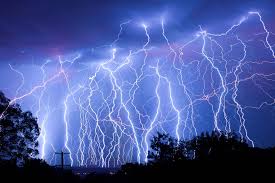Stamp: Weather map for June 1, 2016 (Japan 2025)
Weather map for June 1, 2016 (Japan 2025)
28 May (Japan ) within release Japan Meteorological Agency, 150 Years (2025) goes into circulation Stamp Weather map for June 1, 2016 face value 110 Japanese yen
| Stamp Weather map for June 1, 2016 in catalogues | |
|---|---|
| Colnect codes: | Col: JP 2025.05.28-01b |
Stamp is horizontal format.
stamp from mini-sheetAlso in the issue Japan Meteorological Agency, 150 Years (2025):
- Stamp - First image of Himawari No. 9 face value 110;
- Stamp - First supercomputer face value 110;
- Stamp - Image of Wiechert seismometer and seismic waveform face value 110;
- Mini Sheet - Japan Meteorological Agency, 150 Years face value 10*110;
- Stamp - Mobile observation of volcanoes face value 110;
- Stamp - Motoemachi Period Government Building and Outdoor Hall face value 110;
- Stamp - NAPS11 (supercomputer) face value 110;
- Stamp - Ryofumaru (marine weather observation vessel) face value 110;
- Stamp - Satellite image of June 1, 2016 face value 110;
- Stamp - Toranomon Office Building and front entrance plate face value 110;
- Stamp - Weather map for June 1, 2016 face value 110;
Stamp Weather map for June 1, 2016 it reflects the thematic directions:
A map is a symbolic depiction emphasizing relationships between elements of some space, such as objects, regions, or themes. Many maps are static, fixed to paper or some other durable medium, while others are dynamic or interactive. Although most commonly used to depict geography, maps may represent any space, real or imagined, without regard to context or scale, such as in brain mapping, DNA mapping, or computer network topology mapping. The space being mapped may be two dimensional, such as the surface of the earth, three dimensional, such as the interior of the earth, or even more abstract spaces of any dimension, such as arise in modeling phenomena having many independent variables. Although the earliest maps known are of the heavens, geographic maps of territory have a very long tradition and exist from ancient times. The word "map" comes from the medieval Latin Mappa mundi, wherein mappa meant napkin or cloth and mundi the world. Thus, "map" became the shortened term referring to a two-dimensional representation of the surface of the world.
Meteorology is a branch of the atmospheric sciences (which include atmospheric chemistry and physics) with a major focus on weather forecasting. The study of meteorology dates back millennia, though significant progress in meteorology did not begin until the 18th century. The 19th century saw modest progress in the field after weather observation networks were formed across broad regions. Prior attempts at prediction of weather depended on historical data. It was not until after the elucidation of the laws of physics, and more particularly in the latter half of the 20th century, the development of the computer (allowing for the automated solution of a great many modelling equations) that significant breakthroughs in weather forecasting were achieved. An important branch of weather forecasting is marine weather forecasting as it relates to maritime and coastal safety, in which weather effects also include atmospheric interactions with large bodies of water.


